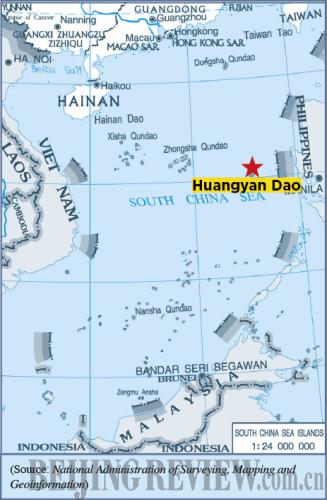|
Aquino seemingly hasn't softened his position on the dispute. But his recent move shows he has begun to adjust his policy slightly. On May 26, Aquino appointed Sonia Brady the new ambassador to China to fix ties with China. The Philippines' parliament speedily approved the appointment four days later. The position has been vacant for more than a year. Brady has previously been ambassador to China. The appointment is considered necessary in seeking a diplomatic solution to prevent escalating territorial tension.
"At least it is a kind of tactical policy adjustment to maximize its own interests," Tang said.
Due to the territorial tension between the two countries, the Philippine economy is beginning to feel the pinch. Its fruit exports to China, an important source of revenue of the country, have been severely affected since the incident broke out.
"It is impractical to draw military support from its allies under the current situation. The Philippines had better return to dialogue with China as soon as possible," Li said.
Historical evidence
Chinese experts say China was the first to discover Huangyan Island, and has exercised jurisdiction over it for a long time.
"Huangyan Island and its surrounding waters are traditional fisheries for Chinese fishermen. Since ancient times, Chinese fishermen have been fishing around Huangyan Island," said Zhang Haiwen, Deputy Director of the China Institute for Marine Affairs.
According to Chinese history, Chinese astronomer Guo Shoujing conducted a survey of the seas around China under the commission from Emperor Kublai Khan, and Huangyan Island was chosen as the point for surveying the South China Sea in 1279, which shows Huangyan Island was discovered by the Chinese at least in the Yuan Dynasty (1271-1368).
All official maps published by Chinese governments of different historical periods marked Huangyan Island as Chinese territory. The island has been consistently under the administration of Guangdong Province at first and later Hainan Province.
The Philippines raised disputes over China's jurisdiction of Huangyan Island only recently. Huangyan Island is "not even included in the Philippine territory on the latest official map published by the Philippines," said Fu in her article.
Zhang said, all the related international treaties, including the Treaty of Paris (1898), the Treaty of Washington (1900) and the Treaty Between Great Britain and the United States (1930) have stated clearly the west limit of the Philippine territory is 118 degrees east longitude, while Huangyan Island, located 117 degrees 48 minutes east longitude, is outside this limit.
"The 1946 Treaty of General Relations Between the United States of America and the Republic of the Philippines, the 1952 U.S.-Philippines Mutual Defense Treaty, the 1961 Republic Act No. 3046 and the 1968 Republic Act No. 5446 all have reaffirmed the legal effects of the above-mentioned treaties and once again expressively defined the Philippine territory, which does not include Huangyan Island," Zhang added.
Chu Hao, a researcher on Southeast Asian studies with the China Institutes of Contemporary International Relations, said the Philippines' claim on Huangyan Island is rooted in the pursuit of natural resources.
In recent years, with the increasing demand for energy as economies grow and global oil prices rise, some Southeast Asian countries have sped up the exploitation of oil and gas in the resource-rich South China Sea. They have tried every means to claim their so-called sovereignty in this region, said Chu.
The South China Sea, considered by many as "the second Persian Gulf," boasts energy reserves of more than 20 billion tons of oil and gas, in addition to rich mineral and marine life resources.
The way forward
Fu said in her article that the 21st century should not be a time to proclaim new territory. If such new acts of territorial encroachment were condoned, the result would be chaotic. She stressed cooperative security in East Asia and the importance of solving the Huangyan Island dispute through dialogue.
"When all parties have shown their cards, dialogue would be much easier," said Tang. "China calls for shelving disputes for joint development pending the final settlement. But China's sovereignty over the island is undisputable."
So far, the Philippines has not stopped seeking support from its international allies.
"Washington is shifting its strategic focus to the Asia-Pacific region and has signed a pact on partnership for economic growth with Manila to help its economic development. However, Manila is only one pawn for Washington. The Philippines should not misjudge the situation and dialogue with China is a wiser choice," said Tang.

Email us at: yulintao@bjreview.com | 